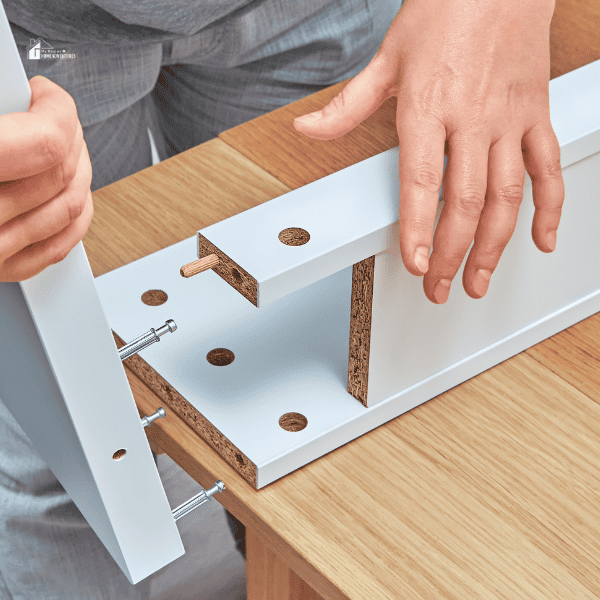Home Sweet Home: Upgrading Your Living Spaces for the Better
This post may contain affiliate links which might earn us money. Please read my Disclosure and Privacy policies hereLet's talk about upgrading your living spaces for the better; let's go! The living spaces within our homes play a crucial role in our lives. They are our sanctuaries of comfort and relaxation, where we gather with family and friends.
But with time, trends change, and so do our tastes. Thus, the need for upgrading our living spaces arises. Here's how to transform your living areas into modern, stylish, and functional spaces.

Integrating Modern Heating Solutions
One of the most influential aspects of your living space is the temperature. By integrating modern heating solutions such as high-quality radiators, you can ensure your home is both aesthetically pleasing and comfortably warm.
Opting for Modern and Stylish Radiators
Modern and stylish radiators are a far cry from the bulky, unsightly heating units of old.
They come in a wide range of shapes, sizes, and designs, from sleek vertical models to horizontal designs that can be conveniently fitted beneath windows.
Their functionality extends beyond heating your home – they can become a statement piece in your living room or bedroom, contributing to the overall aesthetic appeal.
- Selection: Choose a design that complements your room decor. Modern radiators come in various materials, such as cast iron, stainless steel, and aluminum, each offering a unique look and feel.
- Placement: Consider placing your radiator in the coldest part of the room, typically near a window or door.
- Size: Pick a size that is proportional to your room. A large radiator in a small room may look out of place, while a small one may not provide sufficient heat in a large room.
- Energy Efficiency: Modern radiators are more energy-efficient, which can result in significant savings on your utility bills. Check the energy rating before making a purchase.
You might enjoy these posts:
- Frugal Decorating Ideas to Spruce Up Your Home this Summer
- How Can I Make My Home Beautiful On A Low Budget?
Optimizing Layout and Space
When upgrading your living spaces, a significant element to consider is the layout and space.
Even with the most high-end furniture and decor, a poorly arranged room can feel uncomfortable and uninviting.
On the contrary, even the simplest items, if positioned well, can make your room feel luxurious and functional. For a truly bespoke interior that combines elegance and practicality, Chateaux ME offers expert design solutions tailored to transform any space into a masterpiece of style and comfort.
Creating a Focal Point
A focal point is the first place where the eye lands when you enter a room. It could be anything from a grand fireplace, a large piece of art, a statement furniture piece, or even your new stylish radiator. For a bold and timeless addition to your living space, consider incorporating antique fireplaces that bring both character and warmth.
Alternatively, unique decor pieces like the shop Sottsass mirror can enhance the aesthetic appeal of your room while adding a touch of artistic elegance. Its striking design makes it an ideal focal point for modern interiors. Here's how you can create and enhance a focal point in your room:
- Placement: The focal point should be positioned in a location that is immediately visible upon entering the room. This could be the wall directly opposite the entrance or a central spot that's easily noticeable.
- Highlighting the Focal Point: Lighting plays a key role in highlighting your focal point. Consider spotlighting or accent lighting to make your focal point stand out.
- Furniture Arrangement: Your furniture should be arranged to accentuate your focal point. In a living room, for instance, position your sofa and chairs such that they face the focal point. This not only draws attention but also improves the room's functionality by promoting conversation and engagement.
- Accessories: Utilize accessories to enhance your focal point. If it's a fireplace, consider an ornate fire screen or attractive hearth accessories. For a stylish radiator, you might opt for radiator covers or shelves that can serve as display spaces.

Balancing Furniture and Space
The balance between furniture and open space in a room is crucial. It determines whether a room feels welcoming and spacious or cramped and cluttered. Here are some points to consider:
- Scale and Proportion: It's essential to select furniture pieces that align with the room's size. For compact spaces, go for smaller, more streamlined furniture. For larger rooms, you can afford to select larger pieces that fill the space without overpowering it.
- Avoid Overcrowding: Resist the temptation to fill every inch of your room with furniture and decor. Overcrowding can make a room feel smaller and disrupt the flow of movement. Instead, ensure there is enough open space for ease of movement and an airy feel.
- Symmetry: Achieving symmetry in your furniture arrangement can greatly contribute to balance. Symmetrical arrangements tend to be more restful to the eye, creating a sense of calm and order. However, this doesn't mean everything should match perfectly. Strive for balance, not necessarily a mirror image.
- Vary Furniture Heights: Rooms where all the furniture is the same height can seem monotonous. Try to vary the height of your furniture to create visual interest and dynamic spaces.
By paying attention to these details when planning your layout, you can optimize your living space's aesthetics, functionality, and overall feel. After all, a well-planned room not only looks better, but it also functions better.
Enhancing Lighting and Color Schemes
Lighting and color are like the magic wand of interior design. They have the power to dramatically alter the mood, feel, and perception of a space.
Learning to manipulate these elements to your advantage is key to upgrading your living spaces. Here's how to utilize natural light and choose the right color palette to enhance your home.
Utilizing Natural Light
Natural light has an unbeatable charm that instantly breathes life into any room, making it feel larger, brighter, and more inviting. Here are some techniques to maximize the use of natural light:
- Window Treatments: Replace heavy, dark-colored drapes with lighter, sheer curtains or blinds. This will allow more light to filter into the room. Opt for light-reflecting colors like whites and creams to further brighten up the space.
- Mirrors: Mirrors can be used strategically to reflect and amplify the natural light in your room. Place them opposite a window or at an angle where they can catch and scatter light throughout the room. Mirrored furniture or accessories can also help in this regard.
- Furniture Placement: Be careful not to block windows with large pieces of furniture. This disrupts the flow of natural light into the room. Arrange furniture in a way that allows light to spread evenly.
- Translucent Materials: Consider incorporating materials like glass or acrylic in your decor. They can enhance the light's flow through the room, creating a bright, airy atmosphere.

Choosing the Right Color Palette
The color scheme of a room can have a profound effect on its vibe and your mood. It can create a serene and relaxing ambiance, a vibrant and energetic atmosphere, or anything in between. Here are some tips for choosing the right color palette:
- Color Psychology: Different colors evoke different feelings and reactions. For instance, blues and greens are known for their calming effects, while reds and yellows can evoke excitement and energy. Research color psychology to understand how different shades can impact mood and energy levels.
- Inspiration: Look for color inspiration in your favorite items or things that evoke positive emotions. It could be a painting, a photograph, or a piece of fabric. These can serve as the foundation for your room's color palette.
- 60-30-10 Rule: This is a common rule in interior design for balancing colors. 60% of the room should be the dominant color, 30% a secondary color, and 10% an accent color.
- Test Before Deciding: Always test a small area with your chosen color before painting the entire room. Monitor it at different times of the day to see how it changes in various lighting conditions. This will give you a good idea of how the color will look and feel in your space.
By understanding and effectively utilizing natural light and color schemes, you can create a living space that looks visually appealing and contributes positively to your well-being. The aim is to create an environment that you love and enjoy spending time in. If you're looking for tools to assist with this, check out Stonex.
Wrapping Up
Upgrading your living spaces doesn't necessarily require a massive renovation or hefty investment.
By integrating modern heating solutions, optimizing your layout, and enhancing your lighting and color schemes, you can transform your living spaces for the better.
The ultimate goal is to create a home that feels comfortable, functional, and reflective of your personal style.







